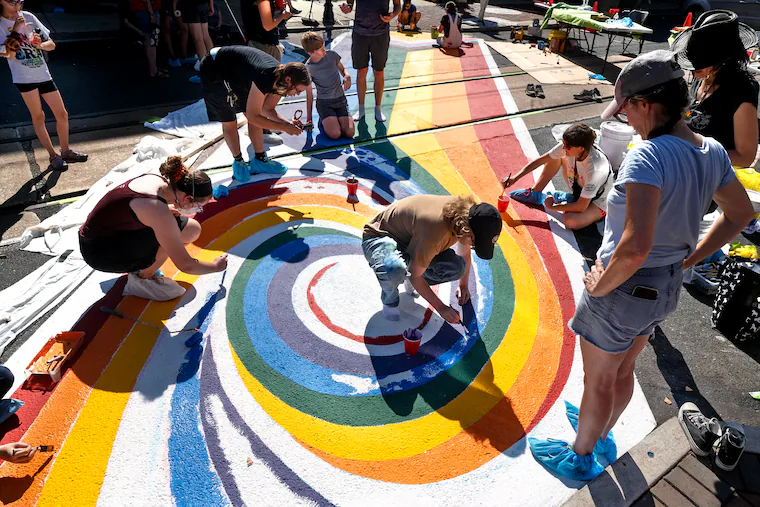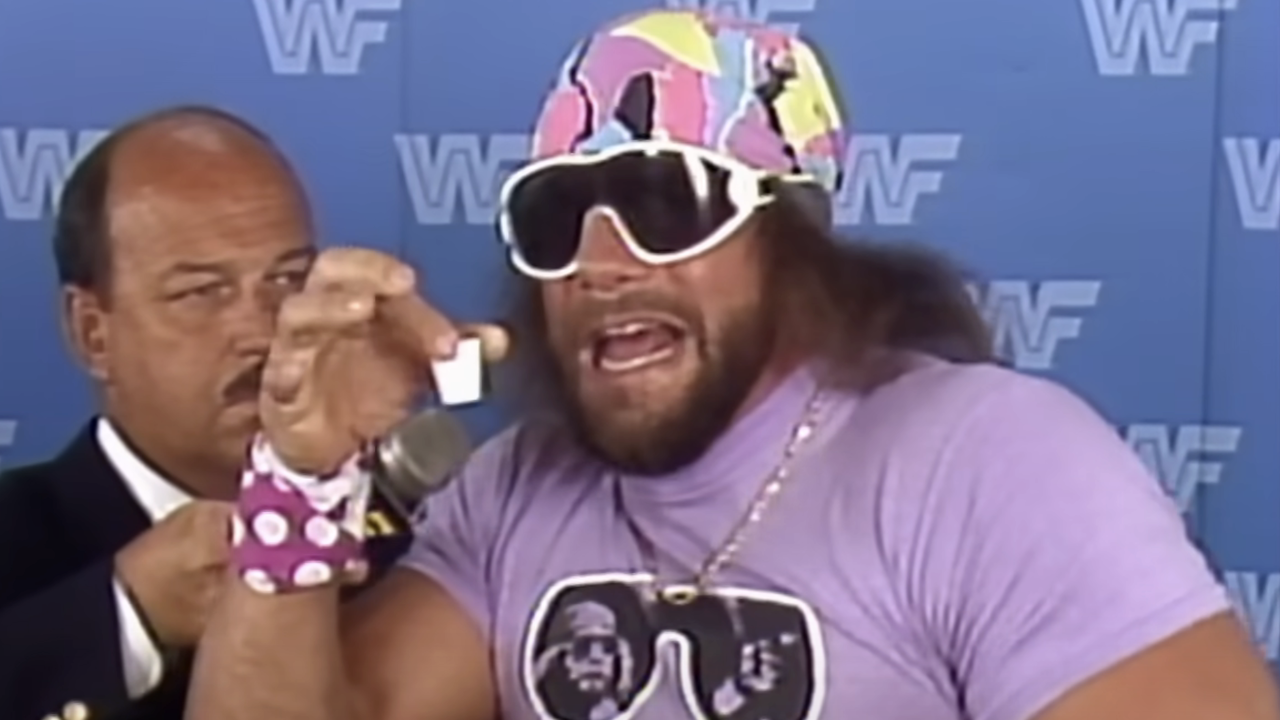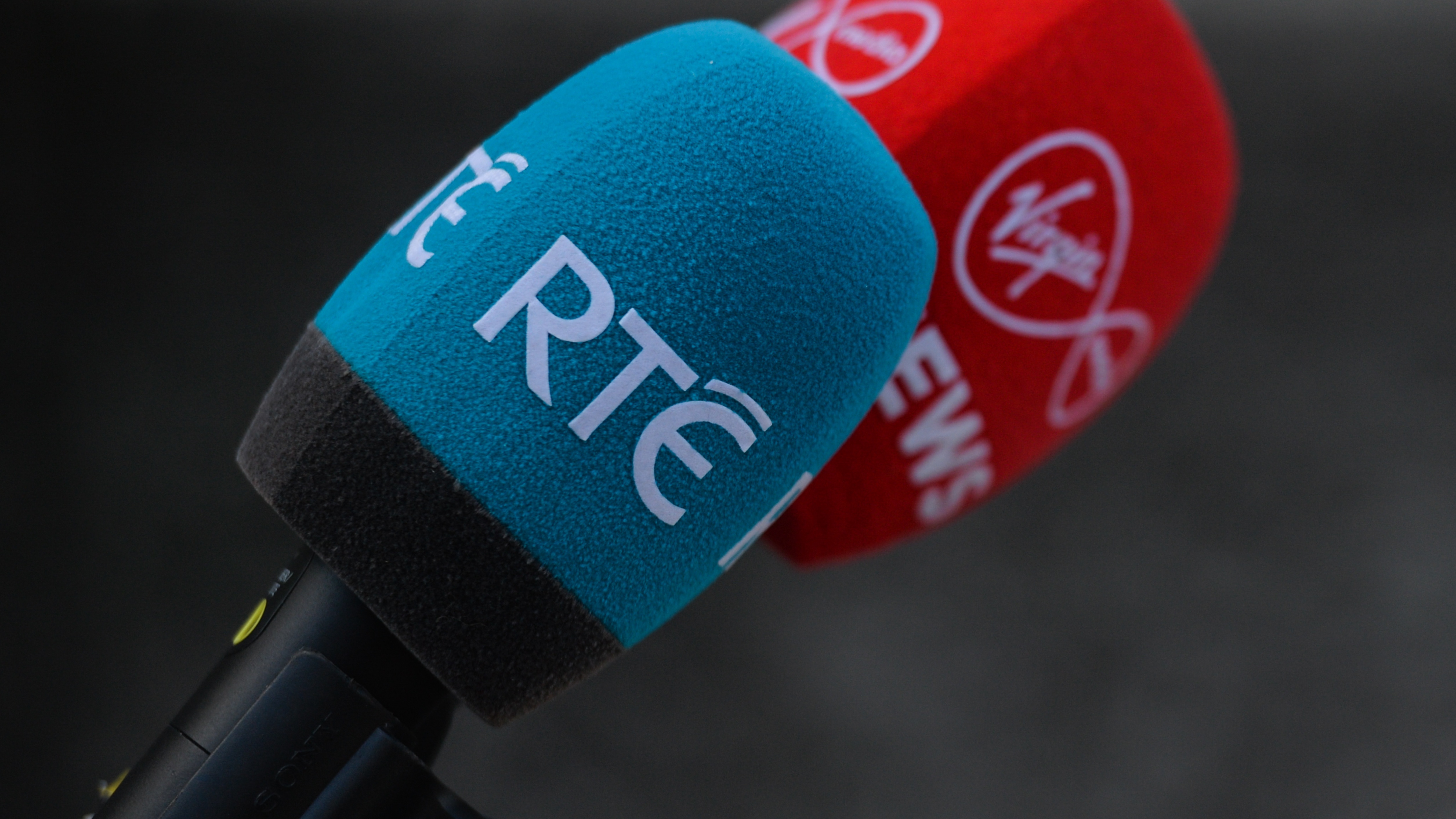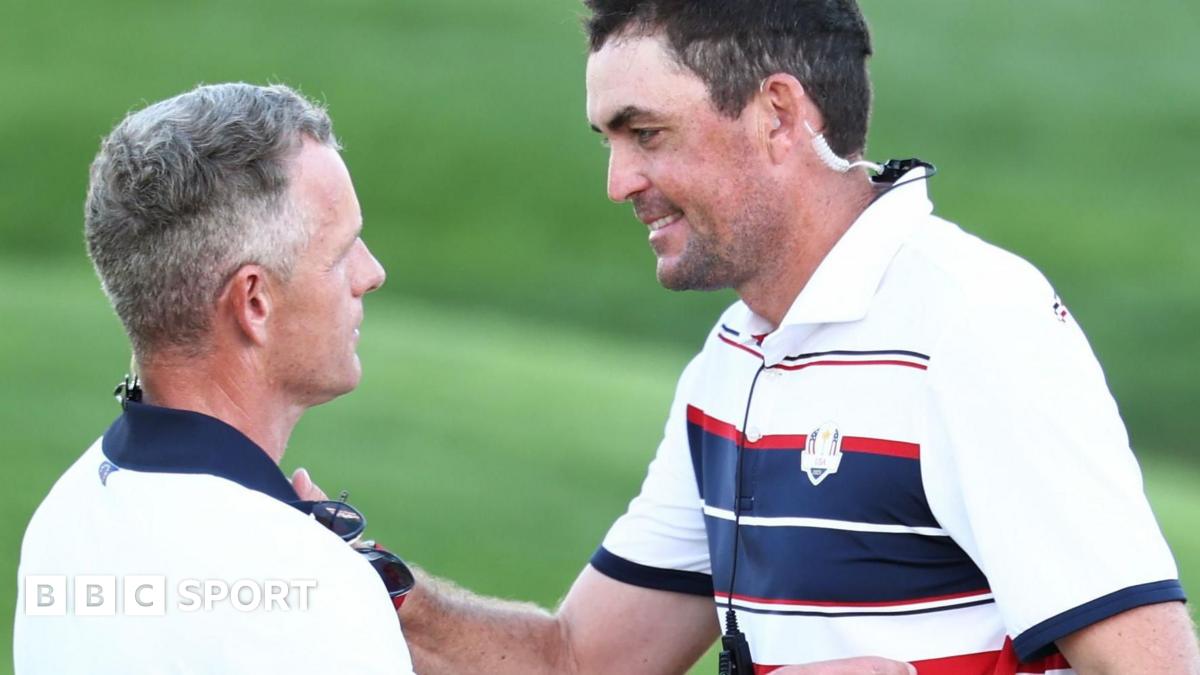
Pat Ackroyd was walking along State Street on Sunday when he stumbled upon a few dozen volunteers painting a rainbow crosswalk in downtown Media. As the group laid down colorful lines and swirls in the street, someone handed Ackroyd a leaf blower and asked him to blow the prior night’s rain away from the paint. He wasn’t part of the project, but he stepped right up.
“It’s how Media is,” he said. “You want art? You want sports? You want good schools? Just find a way of getting it done. Everybody stepping up makes it so much easier.”
The rainbow crosswalk, designed by artist Victor Surbrook and painted with the help of volunteers, embodies that communal spirit, organizers said. Located at the intersection of State and Plum Streets, the mural was a collaboration of the Media Arts Council, Media Borough, and the Media Business Authority, and was funded by over 200 individual donors. The Media Arts Council dreamed up the idea, Surbrook designed it, and local artist Stephanie Untz helped bring it from paper to pavement.
More than just eye candy for the streetscape, the mural is a symbol of inclusion — a sign that, as attacks against LGBTQ+ people rise, all are welcome in “Everybody’s Hometown.”
The Pride crosswalk is the first piece of large-scale public art that Surbrook, a 22-year-old artist and recent graduate of the Pennsylvania Academy of the Fine Arts, has designed. Surbrook got connected with the Media Arts Council’s artistic director, Jeff Thomas, through PAFA’s alumni council. After a monthslong planning process and many drafts, Surbrook and the Media Arts Council landed on a Wizard of Oz motif, adorning the traditional Pride flag with a rainbow swirl reminiscent of Dorothy’s journey to the end of the Yellow Brick Road.
Surbrook said they “wanted it to be more dynamic” while keeping it recognizable as a crosswalk.
As Surbrook shepherded a team of paint-splashed and overall-clad volunteers on the unseasonably warm Sunday, passersby stopped to admire the art and donate to the Media Arts Council.
“I’m happy to be here and happy to see so many people who are supportive,” said Raven Amaro, the arts council’s administrative assistant. “I’m glad to be living in a community where that is the case.”
“It’s a great way for the community to receive the message that everyone should be welcome in Media,” said Bonnie Kaplan, the co-leader of the Pennsylvania chapter of Free Mom Hugs, a nonprofit that promotes support for the LGBTQ+ community.
The project was funded entirely by individual contributions and was supported by the Media Business Authority. The Media Arts Council set out to raise $7,500 to cover painting and maintenance costs. They ultimately raised $9,400. Both SEPTA and the Media Borough Council approved the project.
It was not lost on organizers that as Media laid down its rainbow crosswalk, homages to LGBTQ+ Pride were being stripped away elsewhere.
“We’re seeing a lot of regression,” Surbrook, who is queer, said, citing an order in Florida mandating municipalities remove their Pride crosswalks. The U.S. Department of Transportation has offered similar guidance, saying arterial roads should be kept free of “political messages of any nature” and “artwork.”
Even in Media, support was not universal.
Thomas said comments flooded into the Media Arts Council’s Facebook page bashing the project. He expects the mural to be defaced, as others across the country have been.
“It’s surprising, the lack of empathy that people have,” he said.
Rather than pull back from celebrating LGBTQ+ people, advocates said Media’s mural is more important than ever.
“The job of art is to hold a mirror up,” Thomas said. “It’s easy to get desensitized. I think it’s also easy to throw your hands up and be like, ‘I give up.’”
Amaro, who is bisexual, said she used to take for granted “symbolic” acts of allyship, like businesses celebrating Pride month or municipalities putting down rainbow crosswalks.
“Especially in the past couple of years, I’ve come to realize how much even those symbolic things are important, especially because those things are starting to be taken away,” she said.



